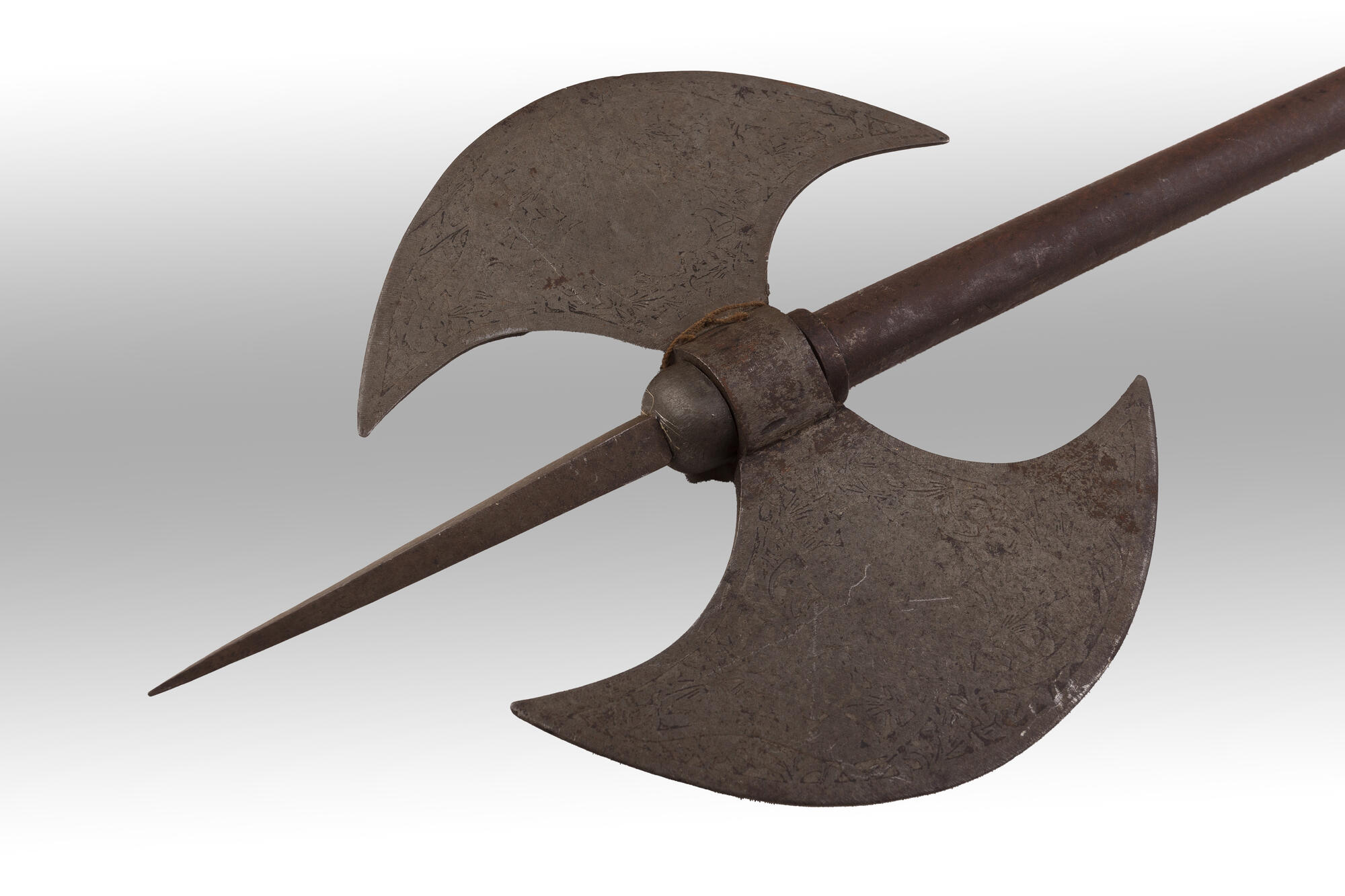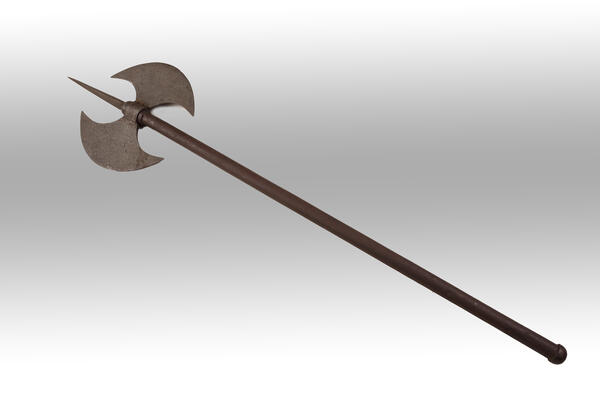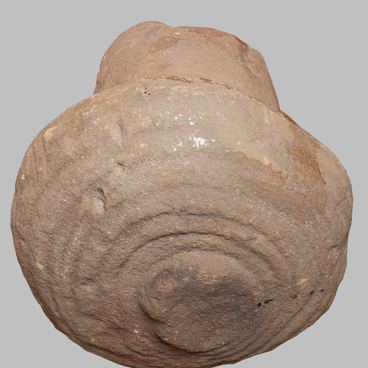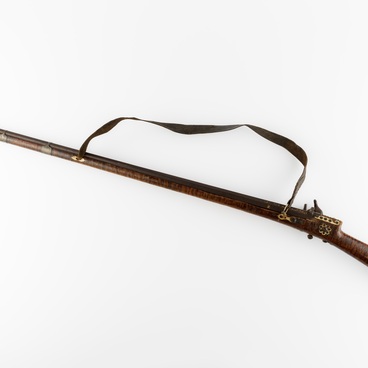A battle-axe is an edged melee weapon. A battle axe occupies an intermediate position between an axe and a halberd. The weapon consists of a shaft, a blade and a counterweight. The shaft of a battle-axe is approximately 70–80 cm long, and the shaft of a halberd is 2.5 m long. The axe has a wide blade, curved in the form of a crescent, sharpened along the convex part, 30–35 cm long. A counterweight is a metal pommel or a spike which can be used to strike. A heavy axe blade on a long shaft would be too clumsy without a counterweight.
The battle axe from the museum exhibition was made in Azerbaijan. It consists of two semicircular wide blades mounted on a metal shaft. The blades are opposite each other. An axe with two identical blades is not the most common type of weapon. On the one hand, this made it possible to strike both forward and backward, but, on the other hand, it required a high level of training from the fighter. More often, a smaller blade, spike or hammer was located on the butt of the ax. The shaft is crowned with a tetrahedral head, smoothly tapering to the point, which made it possible to use the cutting battle axe as a stabbing weapon. The side surfaces of the blades are almost completely decorated with chased floral patterns, which are very characteristic of the Eastern culture.
Despite its formidable appearance, this battle axe has not been used for war and was not even intended for it. It was one of the ritual items and was used in religious holidays celebrated in a number of Muslim countries. Among many peoples, axes served as ceremonial or ritual weapons, for example, the ancient Greek double-sided axe called labrys. Such a weapon was similar in some respect to combat weapons, but differed significantly from it in other characteristics. It was decorated with engraving, gold, silver and inlays of semi-precious and precious stones. Also, it was often less durable and balanced than a military weapon, and was not used in combat.
The battle axe from the museum exhibition was made in Azerbaijan. It consists of two semicircular wide blades mounted on a metal shaft. The blades are opposite each other. An axe with two identical blades is not the most common type of weapon. On the one hand, this made it possible to strike both forward and backward, but, on the other hand, it required a high level of training from the fighter. More often, a smaller blade, spike or hammer was located on the butt of the ax. The shaft is crowned with a tetrahedral head, smoothly tapering to the point, which made it possible to use the cutting battle axe as a stabbing weapon. The side surfaces of the blades are almost completely decorated with chased floral patterns, which are very characteristic of the Eastern culture.
Despite its formidable appearance, this battle axe has not been used for war and was not even intended for it. It was one of the ritual items and was used in religious holidays celebrated in a number of Muslim countries. Among many peoples, axes served as ceremonial or ritual weapons, for example, the ancient Greek double-sided axe called labrys. Such a weapon was similar in some respect to combat weapons, but differed significantly from it in other characteristics. It was decorated with engraving, gold, silver and inlays of semi-precious and precious stones. Also, it was often less durable and balanced than a military weapon, and was not used in combat.




